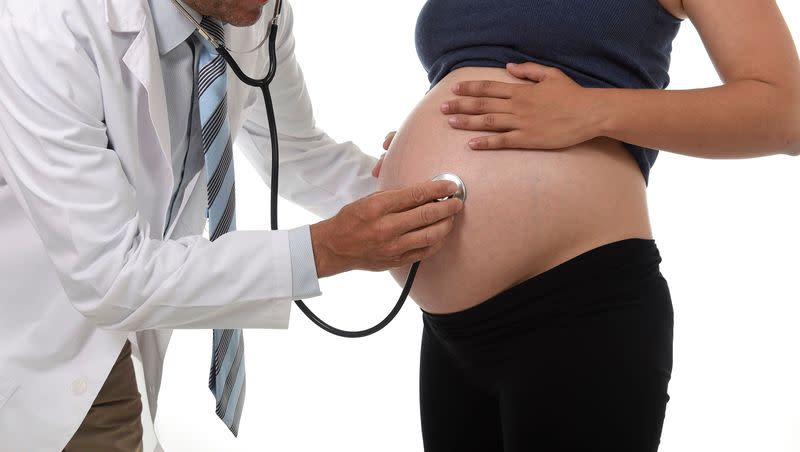U.S. maternal deaths increased by 40% in 2021. What happened?

The number of women dying of pregnancy-related causes has increased 40% over the span of three years, according to new national statistics. And from 2020 to 2021, the number of women who died increased significantly, due in part to COVID-19 and lack of access to care.
According to a report released Thursday by the National Center for Health Statistics in the Centers for Disease Control and Prevention, 1,205 women in the U.S. died during childbirth or of pregnancy-related causes in 2021, for an overall rate of 33 deaths per 100,000 live births. In 2020, that number was 861, while 754 women died in 2019 and 658 in 2018.
Those deaths are called maternal deaths. The World Health Organization defines maternal death as “the annual number of female deaths from any cause related to or aggravated by pregnancy or its management (excluding accidental or incidental causes) during pregnancy and childbirth or within 42 days of termination of pregnancy, irrespective of the duration and site of the pregnancy.”
The rate of Black women who died of pregnancy-related complications was noticeably higher than that of white or Hispanic women. This is a recurring problem.
The maternal mortality rates based on race or ethnicity:
Black women had 69.9 deaths per 100,000 live births.
Hispanic women had 28 deaths per 100,000 live births.
White women had 26.6 deaths per 100,000 live births.
In 2018, the Black maternal mortality rate for women was 37.3, more than twice that of white women (14.9) and Hispanic women (11.8) at the time.
From 2018 to 2021, the maternal mortality rate increased 11.7% for white women, 16.2% for Hispanic women, and 32.6% for Black women.
The CDC said reasons for the difference in rates could include underlying chronic conditions, implicit bias and variations in the quality of healthcare.
Older women were also more likely to die giving birth. For women aged 40 and over, the rate was 6.8 times higher than the rate for women younger than 25.
Related
“Rates increased with maternal age,” the study says. “There were 20.4 deaths per 100,000 live births for women under age 25, 31.3 for those aged 25-39, and 138.5 for those aged 40 and over.”
There were more maternal deaths in 2021 in every age group and racial category compared to 2020.
How COVID-19 affected the rate
A report released by the U.S. Government Accountability Office said that COVID-19 contributed to a quarter of all maternal deaths in 2020 and 2021. COVID-19 was a direct factor in 503 maternal deaths in 2020 and 2021.
The Department of Health and Human Services said in the report that pandemic living adjustments like social distancing made it harder to get “access to care, transportation, or technology,” and changed women’s living and job situations.
The report also listed chronic stress as a factor in the increase in maternal death.
Worldwide maternal mortality
Health care educational organization The Commonwealth Fund has noted that the U.S. has a maternal mortality rate that is “more than three times the rate in most other high-income countries.”
The World Health Organization said, “Almost 95% of all maternal deaths occurred in low- and lower-middle-income countries in 2020, and most could have been prevented.” The victims most affected by maternal mortality lived in poor countries, mostly sub-Saharan Africa.
The goal set by WHO, called the Sustainable Development Goal, strives to reduce maternal mortality 70% by 2030.
United Nations Populations Fund Executive Director Dr. Natalie Kanem told the organization, “It is unacceptable that so many women continue to die needlessly in pregnancy and childbirth. Over 280,000 fatalities in a single year is unconscionable.”
Preventing maternal mortality
WHO says key factors that could reduce maternal mortality include access to contraception for women and quality care before and after childbirth.
The report also says women need access to quality healthcare facilities that can provide care for severe bleeding, infection and preeclampsia. These three treatable conditions need timely and adequate attention after or during childbirth.
The WHO’s strategies to help reduce maternal mortality include strengthening health systems, working to ensure accountability and pushing for universal health coverage.

